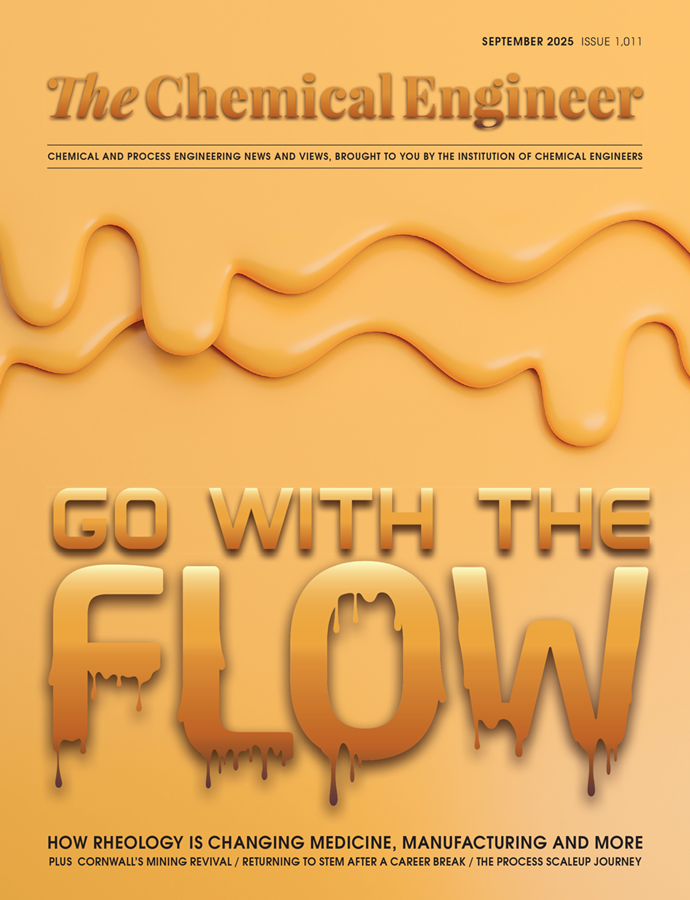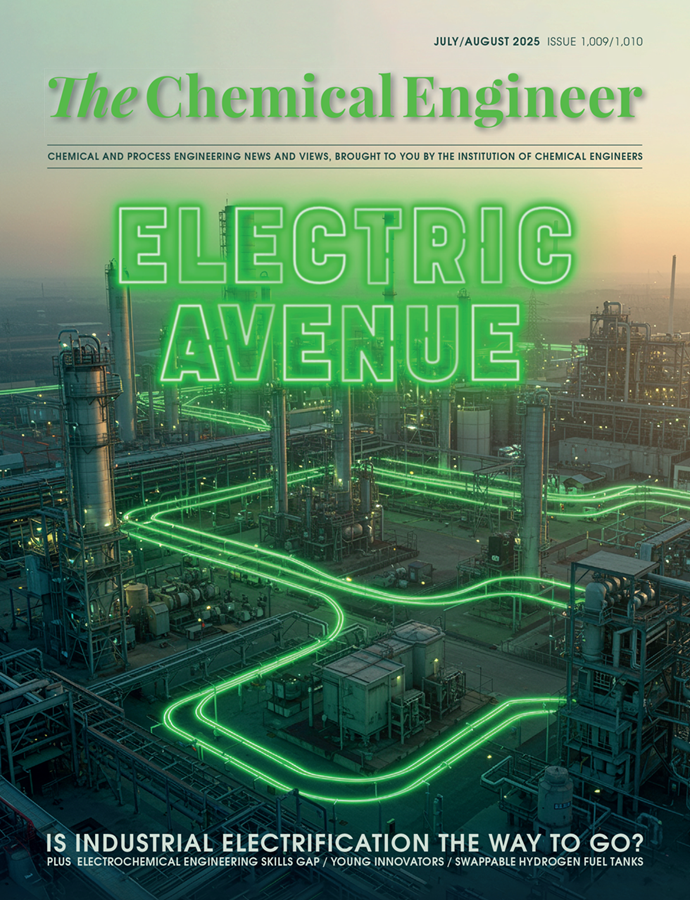Old King Coal Part 2: Coal Gases
Martin Pitt continues his series on the history of coal, looking at coal gas, balloons and the fuels that lit the world
VARIOUS scientists discovered that the gas given off in making coke was flammable, but the earliest development of production was not as a fuel but for ballooning. In 1783 French physicist Jacques Charles (1748–1823) ascended to 550 m in a hydrogen balloon. Charles’ Law is named after him. Hydrogen was made by dissolving iron in acid, so very expensive.
The following year, Dutch professor of natural philosophy (science) Jean-Pierre Minckelers (1748–1824) was paid by the local duke to research an economic way of making “flammable air”. After exemplary experiments heating coal and wood in horizontal tubes, he determined the type of coal and heating regime required to produce the lightest gas, carried out balloon trials and published his results. It had half the lifting power of hydrogen but was vastly cheaper. However, no one scaled up his process until decades later. The first human ascent in a coal gas (see boxout, right) balloon was in 1821 by Charles Green (1785–1870), an English hat-maker who made more than 500 flights as a professional balloonist.

Minckelers also fitted gas lights in his lecture theatre in 1785. Along with other experimenters he did not see anything other than novelty in these lights.
Someone who did was William Murdoch (1754–1839) a Scottish chemist, engineer and inventor who worked for Boulton & Watt in Birmingham. By 1794 his living room was lit by gaslight from a vessel in his back yard. He did the same thing for an industrialist friend and in 1806 installed the first 50 of what would eventually be 904 gas lights at a cotton mill. Unfortunately, his bosses were unconvinced of the commercial potential, dismissed the idea as unworthy of a patent and discouraged his efforts. As a result, when the first gas streetlights were installed on Pall Mall, London, in 1809, they were the work of German entrepreneur Frederick Winsor (1763–1830). Boulton & Watt belatedly developed gas plants and lighting equipment, helped by their expertise in pressurised gastight equipment. Murdoch also made a working model of a steam carriage, which he patented in 1784. His bosses also prevented him from proceeding with that project.
Meanwhile in France, engineer and chemist Philippe Lebon (1767–1804) had invented a spark-ignition internal combustion engine running on gas from wood or coal, and in 1801 proposed gas piped through the home to be used for cooking, heating and lighting, demonstrating his Thermolamp at an exhibition in 1802. Sadly, he died two years later but Winsor effectively carried on his work. He moved to England where Murdoch had already raised public interest, and in 1810 formed the world’s first public gas company, the Gas Light & Coke Company, which was still the largest supplier when the industry was nationalised to form British Gas in 1948. It had laid 30 miles of gas mains in London by 1815, when he moved to France to start a gas company there. By 1819 London had 288 miles, and other cities were beginning to be interested. In 1820 the Wolverhampton Gas Light Company was formed, and in 1824 the first of several balloon flights were made from the works by celebrity Charles Green (using coal gas, of course) with great crowds paying to be present.
In the US, Baltimore was the first city to have gas lighting on its streets in 1816, and other cities followed, as it was cheaper than whale oil. New York had its first gasworks in 1825.

The yellow light from a flame comes from glowing particles of carbon. Minckelers’ best balloon gas had a high concentration of hydrogen which has an almost invisible flame, and methane which gives little soot. As the technology developed, suppliers distinguished between the smoky flame of illuminating gas containing more C2 and above unsaturated hydrocarbons, and that for providing heat. Coals which gave good illuminating gas tended to give poor quality coke, so manufacturers either had gas or coke as their main quality product.
In 1891 Austrian chemist Carl Auer von Welsbach (1858–1929) patented a new type of light called a gas mantle, made from thorium and cerium oxides. A solution of the salts was soaked onto a shaped cotton mesh. When burned, this became a fragile ceramic of the same shape. Instead of the black body radiation of soot particles, this emits an atomic line spectrum in the visible range giving a white light more than ten times brighter. Sooty illuminating gas was no longer needed, so cleaner burning gas could be used for both heat and light, utilising the premixed burner patented in 1857 by German chemist Robert Bunsen (1811–1899), and named after him.
Mixtures meeting specifications for domestic use were known as town gas. Initially (following Minckelers) the pyrolysis was done in horizontal tubes, but later sloping, then vertical ones predominated with coal being loaded at the top and ash taken out of the bottom. For operation up to 1,000°C, the ash would be solid; above 1,200°C, liquid slag; in between as agglomerates. Subsequent systems included moving and fluidised beds.
Coal gas
This was a mixture largely of hydrogen, methane and carbon monoxide. Made from pyrolysing coal, it provided light, heat and power for homes and industry in Britain for 150 years until it was replaced by North Sea Gas (methane) in the period from 1967 to 1977. An 1878 engineering report on coal gas gave its composition as follows:

Gas lighting improved safety at work and on the streets. Gas cookers and fires were cleaner and more controllable than coal. The gas storage vessels called gasometers were a common sight in every city.
Purification and waste
The hot gas would be filtered to remove particles, cooled to condense out tar and aqueous solutions (which were collected in a pit below), and scrubbed with water to absorb ammonia (ammonia is extremely soluble, while H2S is not). Both tar and “ammoniacal liquor” were initially polluting waste but later used as chemical resources. British engineer Samuel Clegg (1781–1861) worked with Murdoch at Boulton & Watt and made a significant contribution to the design of the key components of gas works and gas lighting. He is credited with the invention of lime treatment (first as a suspension, later as a moist solid) to remove H2S from coal gas, essential if it was to be acceptable for public use. This resulted in a toxic waste called “blue billy” because the presence of iron in the lime and HCN in the gas resulted in the complex called Prussian blue and was thus highly visible as well as smelly when dumped on land. From the 1850s iron oxide was used instead, and the resulting iron sulfide burned to release SO2 for sulfuric acid manufacture (the cyanide went to CO2 and N2).
Producer gas
Gasworks did not produce metallurgical coke, but it was adequate as fuel. Burning it with limited air produced the combustible gas CO, an exothermic reaction. To stop this getting too hot, water (steam) could be added to produce CO and H2, another combustible gas mixture, which was endothermic. Variations on this (with steam and air simultaneously or alternately) gave a mixture called producer gas which could be used to heat the retorts in which the coal was pyrolysed. Because it was diluted with nitrogen from air it had too low a calorific value to be transported economically, but it became a cheap fuel for any industrial site with access to lower quality carbon fuel, and more convenient and controllable than solid fuel. Gas engines were specifically designed for it to provide mechanical and later electrical power. There were many designs of reactors and methods, and the gaseous products had other names. Steam alone passed over carbon was called water gas and had a much higher calorific value as it was not diluted by nitrogen but needed external heat or alternating combustion to keep the bed hot. Producer gas and water gas were displaced by natural gas discoveries in the US in the 1920s and Europe in the 1950s, but interest has been revived for gas production from biofuels.
Mond gas
German-born champion of British chemical industry Ludwig Mond (1839–1909) wanted to make ammonia from air, so hoped that the nascent hydrogen from the water gas reaction could react with nitrogen from the air if the conditions were right. After extensive experiments he determined that all the ammonia produced was from nitrogen compounds in the coal.
However, he then pivoted the research to maximise the economic benefits. In 1897 he opened a plant at his company making producer gas by passing air and 250°C steam through the cheapest grade of bituminous coal, gravel-sized particles called slack. An operating temperature of 600°C limited ammonia dissociation to nitrogen and hydrogen, allowing 70% of the coal’s nitrogen content to be recovered as ammonia. This was absorbed in sulfuric acid to produce the highly saleable fertiliser ammonium sulfate – several times the yield achieved in regular gasification. Some 80% of the fuel value of the coal was converted to a clean gas suitable for onsite use for kilns, furnaces and boilers.
However, when used in a gas engine, it converted coal to mechanical power five times more efficiently than a steam engine. And, because slack coal cost only a quarter of the price of steam coal, the overall cost was reduced to just one-twentieth. He then licensed the process to produce cheap fuel for industry, with a useful fertiliser byproduct. In 1901 the Power Gas Corporation was formed to build Mond gas plants and by 1918 had them in 39 countries. The South Staffordshire Mond Gas Company was also formed in 1901 and supplied its gas to over 100 companies via high pressure mains from 1905 until 1963. In 1902 the Trafford Park and Power Supply company was formed to use a Mond gas plant to provide power for businesses on the first modern industrial estate near Manchester.
The Mond process shows exemplary chemical engineering, being a step change in efficiency of materials and energy and economics based on sound science and experiments. It made a huge difference to British industry, as well as being an important source of ammonia before the Haber-Bosch process.

Lurgi gas
The Lurgi process – developed in Germany in 1927 and with the first plant in 1936 – was like the Mond process but with oxygen instead of air, and high-pressure steam (20–30 bar) to maximise gasification of lower-grade coal. It is the most widely used coal gasification method. Many variants were developed to accommodate different fuels, enable chemical recovery or adapt to economic conditions – optimising the output of gas, liquid products or coke. Three Lurgi plants were operated by British Gas, and a new version, the British Gas Lurgi (BGL) process was developed by 1974 but never used in the UK because of the switch to natural gas. However, more than 50 BGL gasifiers are in use in China.
Acetylene
Acetylene (C2H2) is present in small amounts in coal gas, larger amounts helping to give a bright flame. Pure acetylene burns to give the hottest and brightest flame of any hydrocarbon. Hotter than hydrogen, it is used today for cutting and welding. It was discovered accidentally by English chemist Edmund Davy (1785–1857) who was trying to make potassium metal but instead made potassium carbide KC which reacts with water to make acetylene and KOH. In 1892 a method of making calcium carbide (which reacts in a similar way) was discovered independently by Canadian inventor Thomas Willson (1816–1915) and French chemist Ferdinand Moissan (1852–1907), reacting lime CaO with coke to give CaC2 and CO at a temperature of 2,200°C, which was achieved in an electric arc furnace. Willson’s invention resulted in the formation of the company Union Carbide in 1898, using electricity from Niagara Falls. Supplies of calcium carbide resulted in a vigorous use of acetylene as a competitor to coal gas for lighting and heating. By 1900 there were six companies in England, and more in Hungary, France and Germany supplying acetylene generators or gas, and an Ohio children’s home had 3,000 ft of pipe supplying 500 gas lights over 11 buildings, with plans to extend to 2,000 lights.
A simple water drip onto calcium carbide was sufficient to generate acetylene gas for use in hand lamps or single lights, making it practical for households, churches, farms and factories (in contrast, town gas production at any meaningful scale required the operation of a complex chemical plant, involving high-temperature equipment and industrial infrastructure).
Acetylene was used for domestic lights from 1894, for bicycles from 1896, and famously as headlights for the Model T Ford motor car from 1909. Miners were glad to adopt it in place of candles or oil lamps and calcium carbide lights were still preferred by many cavers until the advent of modern LED lamps this century.
The simple flame was much brighter and whiter than an oil lamp or gas flame. It could also be used with a mantle but operating at a higher temperature so brighter (however, mantles were fragile and rather expensive, so simple flames were more common). It was also effective competition for electric lights of the time, recommended for microscopy and for dentists because of its whiter light.
A 1909 report told of several hundred American towns with acetylene streetlights, and domestic cookers for the gas were now “to be found in the stock of every up-to-date dealer” along with room radiators and fireplaces. Burners had been developed which did not smoke or clog after some thousands of hours use.
Acetylene for domestic use largely ceased in the 1950s, replaced by liquefied petroleum gas for isolated communities, and electricity for street lighting. Industrially it is now most often made from partial combustion of methane or as a byproduct of ethylene, though China still produces a lot from coal via calcium carbide.
A limitation with acetylene is that if pressurised to two bar or more there is a danger of polymerisation, which can be explosive, meaning the gas could not be stored and transported very economically. In 1896, French inventor Georges Claude (1870–1960), who has been called “the Edison of France” sought to overcome the problem by exploiting the gas’s enormous solubility in acetone, enabling it to be stored at pressures up to 25 bar. However, the issue wasn’t fully resolved. Acetylene remains shock-sensitive, and, if a cylinder is dropped or jarred, the gas can migrate into the headspace, posing a serious hazard. To prevent this, cylinders are filled with a porous solid that limits the gas to capillary spaces. A suitable material and filling method were only successfully developed in 1906. The first use was in lighthouses, but it was soon used primarily for welding and cutting metal.
The fact that acetylene can dissolve in acetone was used by US confidence trickster Louis Enricht (1844–1923), who claimed to have invented an additive to make water into gasoline. He got millions of dollars from investors, having demonstrated his liquid added to a bucket of water then put into a car’s empty fuel tank. The car started, which impressed reporters. It was later shown that a gasoline engine would run on this mixture, with only two drawbacks – it was more expensive than gasoline and damaged the engine.

Syngas
In 1975 the New York Times said: “Much of the Western coal has been planned for conversion at the mine to synthetic pipeline gas... The ‘syn-gas’ is to replace natural gas from wells, the fuel that is expected to be in the most critical depletion by 1985.” By 1980 Shell expected that “by the middle of next century it is possible that the petrochemical industry could even be sustained very largely, if not entirely, on syngas and methanol derived from coal and methane”. The word had thus changed from synthetic (fuel) gas to synthesis gas, using technology developed in countries with coal but not oil and gas, such as Germany and South Africa, but increasingly applied to non-fossil fuel sources.
Martin Pitt CEng FIChemE is a regular contributor. Read other articles in his history series: https://www.thechemicalengineer.com/tags/chemicalengineering-history
Recent Editions
Catch up on the latest news, views and jobs from The Chemical Engineer. Below are the four latest issues. View a wider selection of the archive from within the Magazine section of this site.




